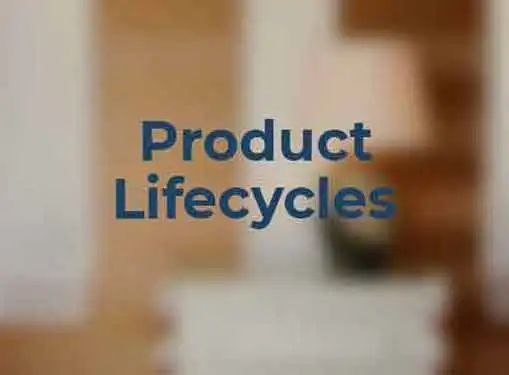Marketing Strategy
Product Lifecycles
Written by Samuel Muriithi for Gaebler Ventures
Different promotional strategies are required for each of the four stages that a product's lifecycle entails. It is of essence to understand what each of these stages entails so as to get the promotional mix right. What are the promotional strategies to use in each of the said stages?
The four stages that any product goes through in its lifecycle are introduction, growth, maturity, and sales decline. For each of these stages the promotional strategies to use are quite different and this is because the market situations also become altered as the cycles succeed each other.

1. Introductory
At the introductory stage customers are obviously without any knowledge of the new product. They don't know how the product will benefit them and more importantly they don't know that they want the product yet. The promotional strategies to use at this point in time must seek to inform and educate the potential consumers about the existence of the product, its uses and the benefits that they stand to accrue from its use. The aim here should be to create basic demand for the product as opposed to soliciting for brand demand i.e. primary demand as opposed to selective demand. The promotional mix in this case tends to be heavily dependent on personal selling as well as public relations events like trade shows.
2. Growth
During the growth stage the promotional mix used in the previous lifecycle should have created enough awareness of the product. The product's uses and benefits should be well known to the consumers and the sales levels should be pretty healthy. These attributes should see an increased demand of the middlemen who want to get involved within the supply chain. The promotional strategies to use here should now focus on stimulating the aforementioned brand demand. With this in mind it is more prudent to lay emphasis on advertising and at the same time ensure that the middlemen get involved in the promotion exercise as well.
3. Maturity
The product then reaches the maturity stage whereby it has to contend with a serious level of competition from similar products. Inasmuch as the sales levels will tend to remain somewhat constant the profit levels will start to dip thanks to the increased financing that is required in promoting the product. Advertising is the main promotional strategy used during this stage.
4. Decline
In the sales decline stage the product is faced with stiffer competition and this means that sales and profits will decline steeply. The fact that newer alternatives will start arriving on the scene means that the product will be phased out naturally. Whatever promotional strategy that is to be used during this time should be quite minimal.
Samuel Muriithi is a business owner in Nairobi, Kenya. He has extensive international business experience in the United States and India.
Share this article
Additional Resources for Entrepreneurs

Conversation Board
We greatly appreciate any advice you can provide on this topic. Please contribute your insights on this topic so others can benefit.